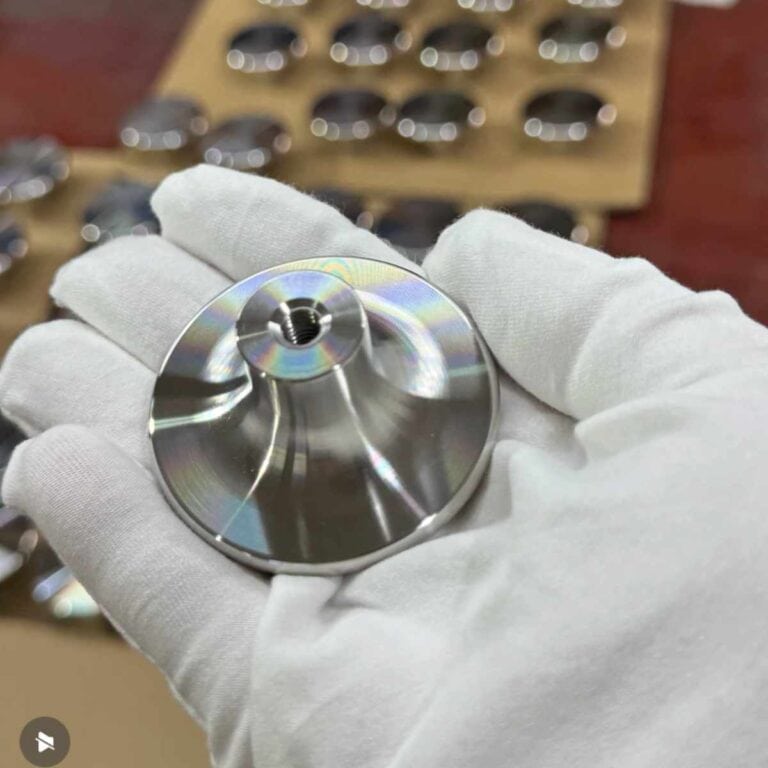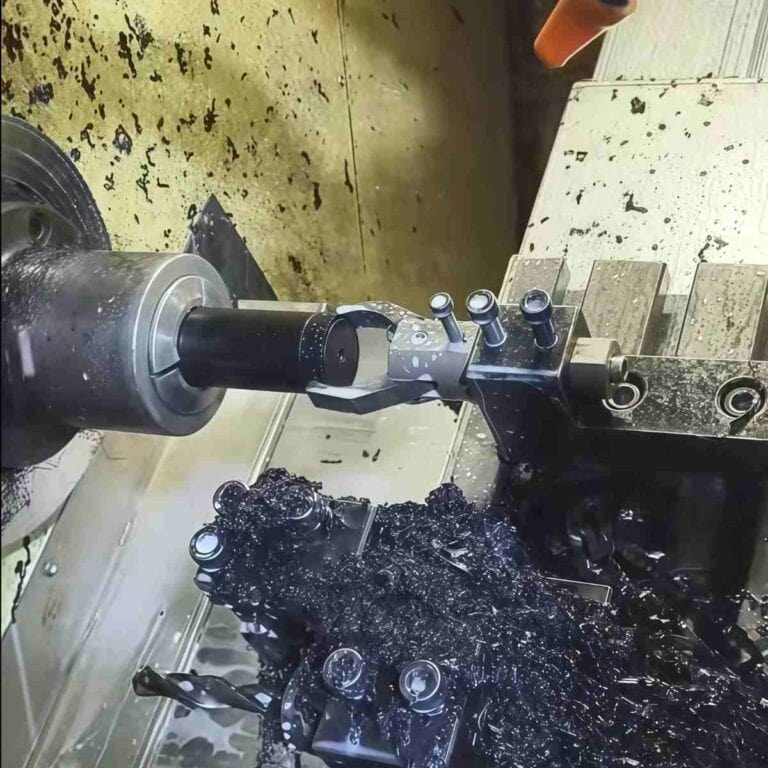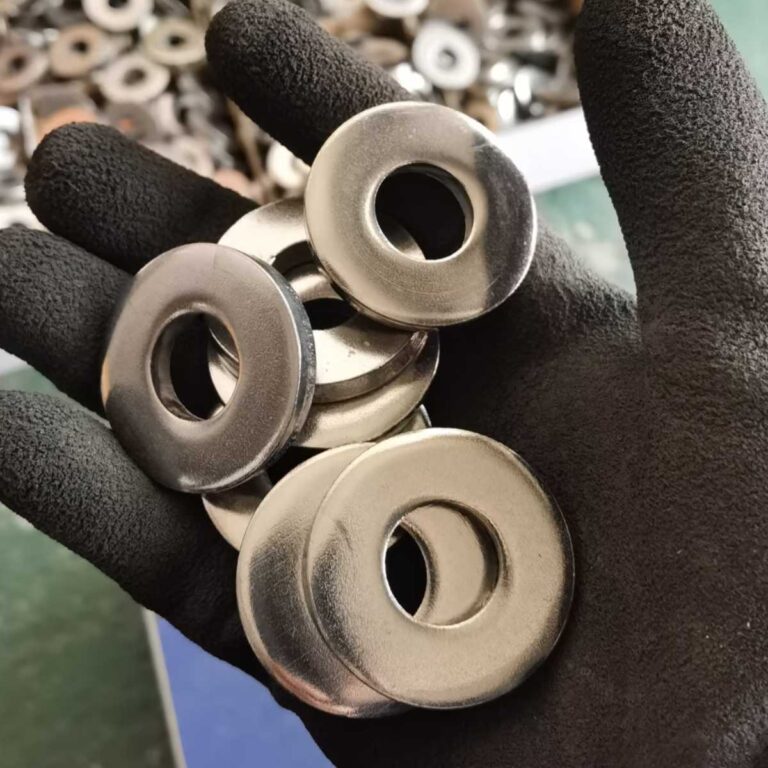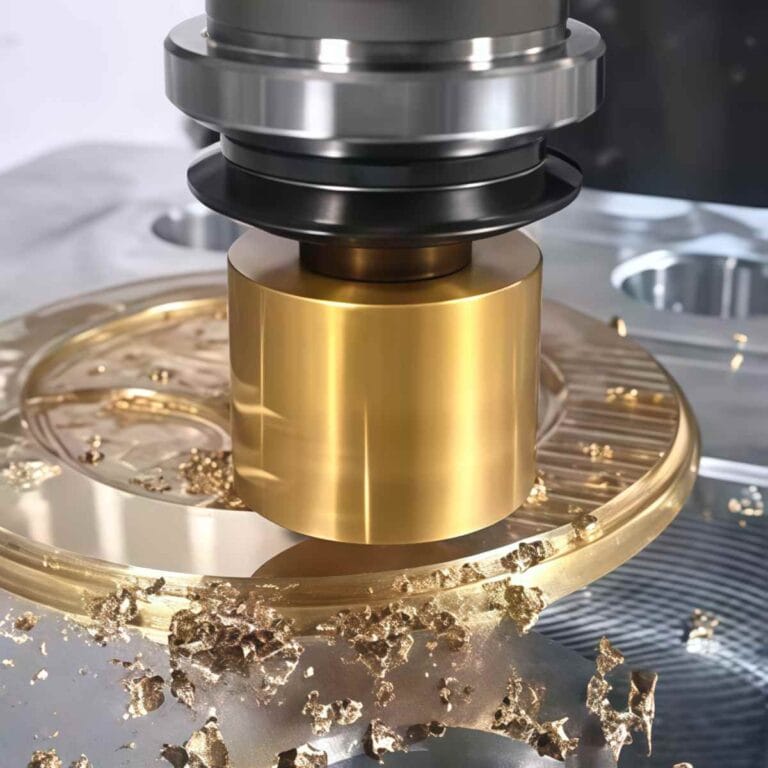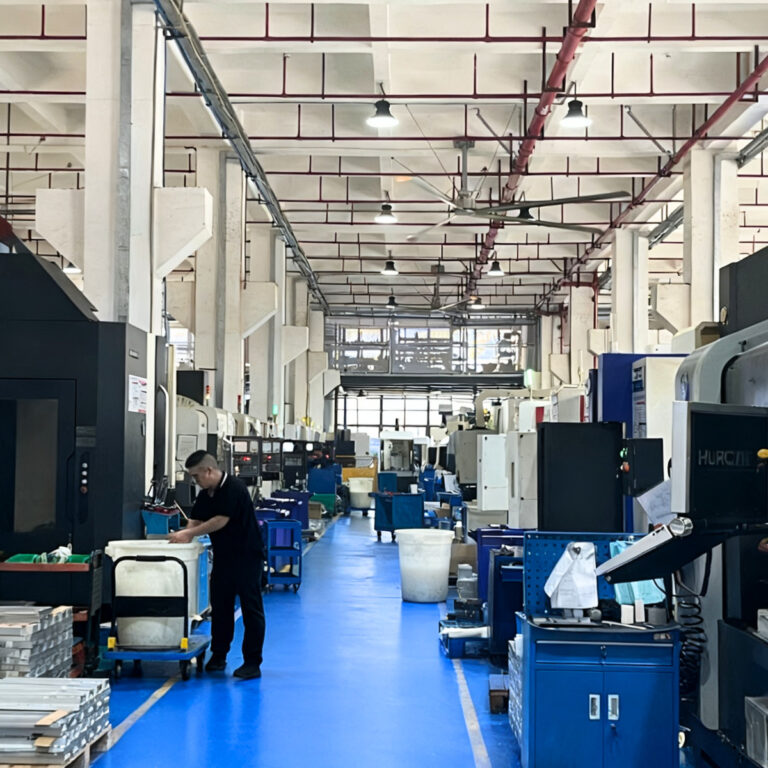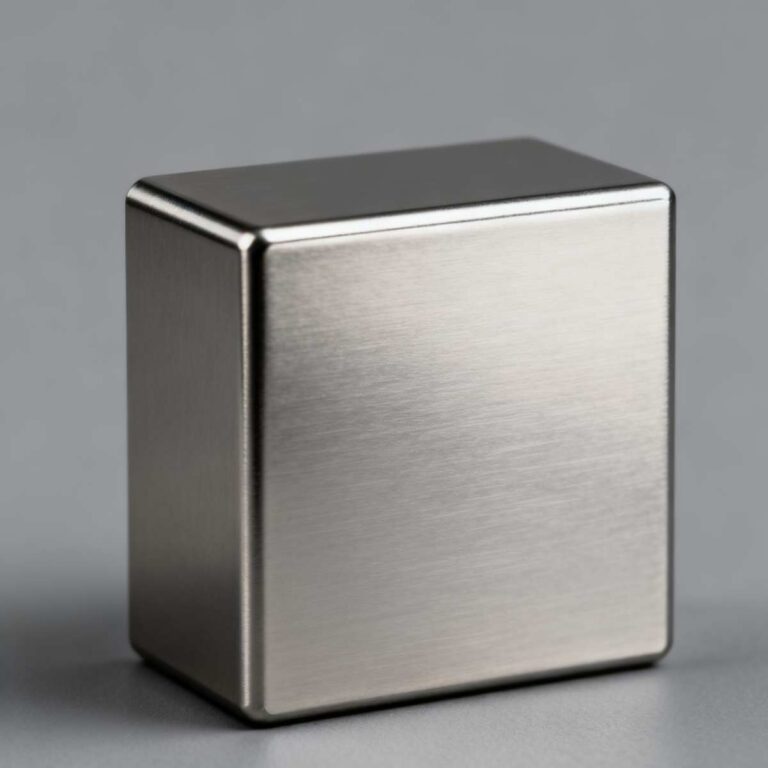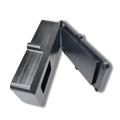In CNC engineering plastics processing, ULTEM (polyetherimide) has become a popular choice in key application areas due to its high strength, high temperature resistance and good electrical properties. Although it is more “delicate” than conventional plastics, through reasonable process preparation and parameter control, ULTEM can be fully processed by CNC precision and applied to industries with extremely high performance requirements such as medical, aviation, and electronics. This article will combine my many years of practical experience to analyze in detail the performance, models, processing techniques and industry applications of ULTEM materials.
What Is ULTEM
ULTEM, the full name of Polyetherimide (PEI), is an amorphous high-performance thermoplastic developed by SABIC (formerly General Electric Plastics Division). ULTEM is always one of the materials of choice in my CNC machining projects, especially when it involves high temperature, high voltage or chemical corrosion environments. It often appears in light amber translucent rods or sheets, with excellent dimensional stability, electrical insulation and thermomechanical strength. Its long-term use temperature is as high as 170°C, and its short-term heat resistance can even reach 210°C. It has a UL94 V-0 flame retardant rating, making it widely used in the aviation, medical and electrical industries.
I selected ULTEM 1000 in a project to process an electrical insulation guide kit for a medical customer. It not only met the surface roughness requirement of Ra < 1.6 μm, but also passed the 500-cycle test of high-temperature 121°C steam sterilization. The parts showed no obvious deformation or performance degradation, which fully demonstrated its engineering applicability and stability.
ULTEM’s main chain structure is composed of aromatic groups and imide groups, which give it high rigidity and heat resistance. As an amorphous thermoplastic, it does not have a clear melting point, but exhibits a glass transition temperature around 210°C. This molecular arrangement gives it good dimensional stability during processing, making it particularly suitable for CNC turning, milling and precision molding.
Unlike crystalline thermoplastics (such as PA and POM), ULTEM does not melt when heated, but softens gradually. Thanks to this feature, I can perform continuous finishing on it in a CNC lathe without worrying about rheological problems, which is suitable for processing thin-walled parts or high-precision tolerance structures.
Compared With Other High-Performance Plastics (Such As PPSU, PC)
When I make material selections, I often compare ULTEM with other high-performance engineering plastics such as PPSU and PC. Compared with PC (polycarbonate), ULTEM has a temperature resistance that is nearly 80°C higher (PC is about 130°C), a higher dielectric strength, and a more scratch-resistant surface. In terms of mechanical properties, ULTEM’s tensile strength (110–117 MPa) and flexural modulus (about 9000 MPa) are also better than PPSU.
In addition, ULTEM has a moisture absorption rate of less than 0.25%, which greatly reduces the dimensional changes caused by water absorption, which plays a key role in the stable assembly of my medical and electronic component projects. Although PPSU has stronger impact resistance, ULTEM has a more balanced performance in areas involving electrical insulation, thermal stability and flame retardancy, and is especially suitable for functional component applications after precision CNC processing.
What Are The Main Properties Of ULTEM
In my past ten years of precision parts machining, ULTEM has always been the main material of choice in high reliability projects. It is known for its high strength, excellent thermal stability, electrical insulation and chemical resistance, and is particularly suitable for CNC machining parts operating in harsh environments.
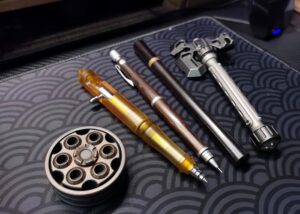
Mechanical Strength (Tensile Strength Up To 110 MPa)
ULTEM has a tensile strength of 90–117 MPa (depending on the model) and a flexural strength of up to 170 MPa. Its high modulus (up to 9000 MPa) gives it good structural stability and resistance to deformation. When processing thin-walled support parts, I found that ULTEM has much less springback than POM or PA, making it easier to control tolerances in precision-fit structures.
Heat Deflection Temperature Up To 210°C
ULTEM has a glass transition temperature of 210°C and a heat deformation temperature (@1.8MPa) of over 200°C, which is much higher than most general engineering plastics. This means that under high temperature and high pressure conditions, the parts will not soften, flow or lose dimensional control. I once participated in an aircraft engine internal component project, using ULTEM to process a batch of anti-vibration pads, which were maintained in a continuous operating environment of 190°C for more than 300 hours without obvious dimensional changes.
Excellent Electrical Insulation Performance
In terms of electrical performance, ULTEM has a dielectric strength of more than 800 V/mil (about 32 kV/mm) and a volume resistivity of up to 10¹³~10¹⁵ Ω·cm. This performance is particularly critical in the processing of high-frequency insulation components. I designed an integrated ULTEM insulation shell for a radar module, which required a breakdown voltage greater than 18 kV. The test results were better than PEEK and PPS, and the performance was very stable.
Chemical Resistance And Low Water Absorption
ULTEM absorbs almost no water, with a saturated water absorption rate of only about 0.9%, which greatly reduces the risk of dimensional drift. It is also very resistant to acids and alkalis, and can resist corrosion from common industrial media such as alcohols, greases, and organic solvents. I have used ULTEM 1000 to make valve cores in laboratory pumps and valves, and the parts were continuously exposed to an acidic gas (pH < 3) environment for 6 months, and the condition of the parts was still good.
What Are The Common Models Of ULTEM
In actual processing projects, I often encounter customers who have questions about the selection of different ULTEM models. According to my experience, the mainstream ULTEM models on the market currently include unfilled, glass fiber reinforced, self-lubricating and other versions, covering different needs from medical, aviation to electrical and food industries.
Each model has different performance focuses. When selecting, you should make a comprehensive judgment based on parameters such as strength, thermal stability, dimensional accuracy and friction requirements:
| Model | Filling ingredients | Key Features | Typical application scenarios |
| ULTEM 1000 | No padding | Pure and transparent, high insulation, heat-resistant, medical and food-grade certified | Medical equipment, laboratory equipment, electrical insulation parts |
| ULTEM 2100 | 10% glass fiber reinforced | Medium strength, improved rigidity, lower thermal deformation | Lightly loaded structural parts, fixtures, semi-structural supports |
| ULTEM 2200 | 20% glass fiber reinforced | Strength better than 2100, high dimensional accuracy | Industrial positioning blocks, electronic structural parts |
| ULTEM 2300 | 30% glass fiber reinforced | High strength, high rigidity, excellent dimensional stability | Aviation structural parts, automotive fixtures, mechanical brackets |
| ULTEM 2400 | 40% glass fiber reinforced | Very high modulus, less thermal expansion, but more difficult to process | Precision clamping parts, mold linings |
| ULTEM 4000 | Graphite + PTFE lubricating filling | Low friction coefficient, excellent wear resistance, dry running possible | Sliding components, guide rails, pump and valve slides |
| ULTEM 5000 | Carbon fiber reinforced | Excellent creep resistance and impact resistance, higher strength | High-load precision components, functional housings |
Can ULTEM Be CNC Processed
Yes, ULTEM is a high-performance thermoplastic material that is very suitable for CNC machining. It has thermal stability and structural strength, but it is not as soft, elastic, and difficult to control the size as some plastics. My experience is that as long as the right tool and cutting parameters are selected for different models (such as ULTEM 1000, 2300, etc.), turning, milling and drilling can all achieve a stable accuracy of ±0.02 mm.
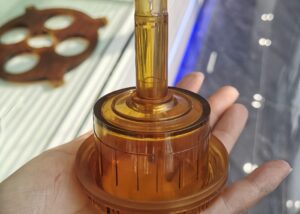
Below I will elaborate on the performance differences and problem solving under several processing forms :
Geometries Suitable For CNC Turning, Milling And Drilling
The ULTEM parts I often process include:
Turning : Φ10–Φ100 mm bushings, connecting rings, etc., suitable for ULTEM 1000, using carbide tools up to Ra 1.6 μm.
Milling : Plates, shells or bases. The glass fiber reinforced type can maintain a flatness of ±0.03 mm and is suitable for structural support parts.
Drilling : Deep holes ≤Φ6 mm are not recommended to be formed in one go. They need to be drilled in sections and cooled to avoid internal stress cracks.
I suggest avoiding “sudden changes in cross-section” and “sharp-angle connections” in the structure, which can effectively reduce warping or edge collapse caused by residual stress during processing.
Problems Of “Edge Collapse” And “Cracks” That May Be Encountered During Processing
Although reinforced materials such as ULTEM 2300 have high hardness (Rockwell M 114+), they are also more brittle, especially at the exit of the drill hole or sharp corners. I once encountered material edge bursting when processing a 20 mm thick ULTEM 2300 plate embedded hole. I solved it by adjusting the drill head rake angle and increasing the pre-drilling. Another type is thermal cracking, which mainly occurs when the dry cutting speed is too fast or the tool is worn. The solution is to use non-aromatic water-soluble coolant and keep the tool sharp.
Differences In CNC Performance Between Different Models
ULTEM 1000 : Unfilled, good ductility, smooth processing, but slightly poor dimensional stability, suitable for making sealing rings or insulating parts.
ULTEM 2300 : 30% glass fiber reinforced, good rigidity, low thermal deformation, suitable for structural parts, but needs to prevent cracking, and the tool wears quickly.
ULTEM 4000 : Because it contains PTFE and graphite, it has good self-lubrication and the processed surface is not easy to be drawn, but it requires particularly hard tools.
In general, ULTEM can not only be processed by CNC, but also excels in structural stability, surface quality, and dimensional tolerance control. As long as you master parameter matching and process skills, it will be an ideal material that takes both structure and performance into consideration.
What Are The Precautions When Processing ULTEM
When machining ULTEM, the most important thing to pay attention to is its poor thermal conductivity and high rigidity, which means that a little carelessness may lead to heat accumulation, surface corrosion or internal stress cracks. I have summarized several key experiences in many batch CNC machining: use sharp carbide tools, keep the speed low (800-1500 rpm is recommended), and feed moderately (0.05-0.15 mm/rev). Especially for glass fiber reinforced models (such as ULTEM 2300), it is necessary to combine air cooling or mist cooling to prevent thermal cracks caused by heat accumulation. In addition, workpiece clamping and path optimization are also particularly critical in multi-axis complex machining, otherwise it is easy to cause corner edge collapse or cracking.
Here are some specific strategies I often use:
Tool Material Recommendation (HSS Vs Carbide Vs PCD)
When machining unreinforced ULTEM (such as 1000), HSS tools can meet small batch requirements, but if the machining time exceeds 30 minutes, the blade will be significantly blunted. I usually use ultra-fine grain carbide tools for finishing, whose heat resistance and edge strength can maintain machining stability for more than 2 hours.
When processing 30% glass fiber reinforced materials such as ULTEM 2300, PCD (polycrystalline diamond) tools work best. Glass fiber wears tools very quickly. In a batch process, tungsten carbide tools wear 4-5 times faster than PCD tools, and the cost is higher.
Processing Parameter Settings: Speed, Feed, Cutting Depth
Speed : For ULTEM 1000, I usually set it to 800–1200 rpm; if it is a fiberglass reinforced model, I recommend lowering it to 600–1000 rpm to prevent thermal expansion.
Feed Rate : It is most stable when controlled between 0.05–0.12 mm/rev. Too high a rate may cause edge breakage, while too low a rate may affect efficiency.
Cutting Depth : Rough machining can be set within 1.0 mm, and I set it to 0.3-0.5 mm/cut during the finishing stage to help maintain geometric accuracy.
How To Deal With The Impact Of Glass Fiber On Tool Life
Glass fiber is a highly abrasive filler. When I was machining the ULTEM 2300 valve body structure, I used the same tool to run continuously for 6 hours to test the tool life. As a result, the surface Ra increased from 0.9 μm to 2.8 μm, which directly affected the part matching accuracy. My suggestion is to check the tool wear every 2 hours of operation, combined with online tool measurement or manual quick inspection. In addition, the use of end edge coatings such as TiAlN can also extend the life by 20-30%.
Tips For Maintaining A Smooth Surface Finish
Although ULTEM has self-lubricating properties, it is easy to leave tiny burrs after long-term continuous processing. I usually switch to a “polishing knife” or a 0.2R finishing knife during the last 0.1 mm light cutting process, and then combine high-speed scanning (2000 rpm+) and light feed (0.02 mm/rev) to control the surface roughness within Ra < 1.6 μm, which meets the surface standards of medical devices and semiconductor parts. If there are traces of brushing, I will use ultra-fine sandpaper to finish it manually, or use fine-grained bead blasting for light polishing.
In summary, machining ULTEM is not a “standard routine” process. It has high requirements for tools, parameters, cooling and experience. Especially in the glass fiber reinforced version, the machining difficulty will increase significantly, and it is necessary to rely on precise control and experience to ensure both quality and cost. If you are trying this type of material for the first time, I suggest starting with a simple structure, running a few samples to familiarize yourself with its processing behavior, and then gradually expanding to batch structural parts. If necessary, I can help you develop a set of dedicated parameter setting suggestions.
In What Industries Is ULTEM Processing Commonly Used
ULTEM is widely used in industries with extremely high performance requirements due to its high strength, high temperature resistance, strong insulation and other characteristics. My clients include medical, aviation, semiconductor and electrical industries, and each industry has different requirements for material performance and certification compliance.
The following are the types of ULTEM parts I often process and their corresponding industry requirements:
| industry | Common ULTEM Parts | Key performance requirements | Certification Standards |
| Medical Industry | Surgical instrument housings, endoscope components, infusion interfaces | Autoclavable (134°C), biocompatible, impact resistant | FDA, USP Class VI, ISO 10993 |
| Aerospace | Cabin connectors, cable holders, instrument housings | Lightweight, high rigidity, fire resistant (UL94 V-0) | FAR 25.853, UL 94 |
| Semiconductor Equipment | Wafer fixture, vacuum chamber support structure | High cleanliness, corrosion resistance, no outgassing, plasma etching resistance | SEMI Standards |
| Electrical Industry | High frequency connector housings, high voltage insulation components, cable isolators | High dielectric strength (>800 V/mil) and strong dimensional stability | UL 94, IEC insulation grade |
FAQs
Can You Machine Ultem?
Yes, I’ve successfully CNC machined Ultem in forms like rods and plates. With the right parameters—low RPM (~500–1000), sharp carbide tools, and light feed rates—I can achieve tolerances as tight as ±0.02 mm, especially on glass-filled grades like Ultem 2300.
What Is The Manufacturing Process Of Ultem?
Ultem is produced through the condensation polymerization of BPA and anhydrides, then extruded into rods or sheets. I typically receive it pre-annealed or raw, and for tight-tolerance machining, I often perform secondary annealing at ~200°C to relieve stress before CNC processing.
Does Ultem Crack Easily?
Unfilled Ultem is ductile, but reinforced grades like Ultem 2300 are more notch-sensitive. If cutting forces or clamping pressure are too high, stress cracking may occur. I always pre-anneal and avoid sharp internal corners to minimize crack initiation during or after machining.
What Is The Tolerance Of Ultem Machining?
With proper fixturing and toolpath control, I typically hold ±0.05 mm for Ultem 1000 and ±0.02 mm for Ultem 2300. Dimensional stability improves with post-machining annealing. Ultem’s thermal expansion (~55–65 ppm/°C) is a limiting factor for high-precision parts.
What Are The Disadvantages Of Ultem?
While Ultem is strong and thermally stable, it has drawbacks: high cost, limited UV resistance, and moderate chemical resistance to strong bases. It also has poor wear resistance unless filled. In machining, stress cracking and tool wear on glass-filled grades are frequent concerns.
What Is The Smallest Machining Tolerance Possible?
Using high-precision CNC with rigid setups, I’ve achieved ±0.01 mm on Ultem 2300 for aerospace electrical housings. But this depends on material batch stability, annealing, and environmental control. For production, ±0.02 mm is more practical and repeatable for most Ultem grades.
Conclusion
ULTEM is an engineering plastic that takes into account performance, processability and stability. It has high requirements for tools, parameters and environment in CNC processing, but as long as the appropriate technology and pre-treatment methods are mastered, high-precision and high-finish mass production requirements can be fully achieved. It is recommended that when selecting materials, it is necessary to comprehensively judge whether to use standard, glass fiber reinforced or self-lubricating ULTEM based on dimensional tolerances, operating temperature and corrosion resistance requirements to maximize the performance of the material.

